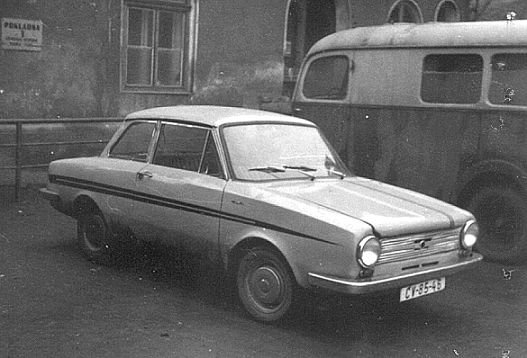Description
The Glas 1304 was part of the expanded Glas “04” series of small family cars, introduced in the mid-1960s as a development of the pioneering Glas 1004. By increasing engine capacity and improving performance, Glas aimed to strengthen its position in the highly competitive compact car market dominated by the Volkswagen Beetle, Opel Kadett, and BMW 700. The 1304 carried the same innovative engineering as the 1004 but offered more power and a broader appeal for buyers who wanted a practical yet technically advanced car.
Visually, the Glas 1304 retained the same clean and practical design language as the 1004. It was available as a two-door saloon, coupé, estate (Kombi), and cabriolet, giving customers a wide choice of body styles. The lines were boxy but modern, with upright proportions, a simple grille, and restrained chrome trim. The estate version added useful load space for families or businesses, while the coupé and cabriolet variants brought a sportier, more stylish flavor. Glas emphasized versatility, presenting the 1304 as a car that could meet different lifestyles and needs.
Inside, the 1304 was simple but more refined than earlier Glas models. It offered seating for four, with improved comfort over the Isar and a more modern cabin layout. The dashboard carried essential instruments, with higher trim versions offering extra features and better-quality upholstery. Though not luxurious, the interior felt contemporary, practical, and cheerful, reflecting the aspirations of a small but ambitious manufacturer.
The heart of the Glas 1304 was its 1,290 cc four-cylinder engine with an overhead camshaft driven by a toothed timing belt—a design Glas had pioneered with the 1004 in 1962. In standard form, the engine produced around 60 horsepower, while sportier versions offered up to 85 horsepower. This gave the car a top speed of between 140 and 160 km/h (87–99 mph), depending on specification, which was competitive in the small-car segment of the mid-1960s. Power was delivered through a four-speed manual gearbox, and the lightweight construction ensured agile handling and strong fuel economy.
On the road, the Glas 1304 was lively and enjoyable to drive. Its advanced engine gave it smoothness and flexibility, while its compact dimensions made it easy to handle in both city and country driving. Although it could not match the polish of bigger manufacturers, it won praise for its innovation and spirited character, standing out as an independent alternative to the mass-market cars of the time.
Production of the Glas 1304 ran until 1967, when BMW acquired Hans Glas GmbH. After the takeover, some models continued under BMW badging for a short period, but Glas’s own branding soon disappeared. Despite this, the 1304 demonstrated the company’s technical ambition and helped cement its reputation as an innovator.
Today, the Glas 1304 is a rare and collectible car. Surviving examples are prized for their engineering significance, their charm as compact family cars, and their role in the history of Glas’s pioneering use of timing-belt-driven OHC engines. They are remembered as spirited, practical cars that carried Glas’s creativity into its final independent years, standing as a testament to what a small manufacturer could achieve in the competitive 1960s European car market.
